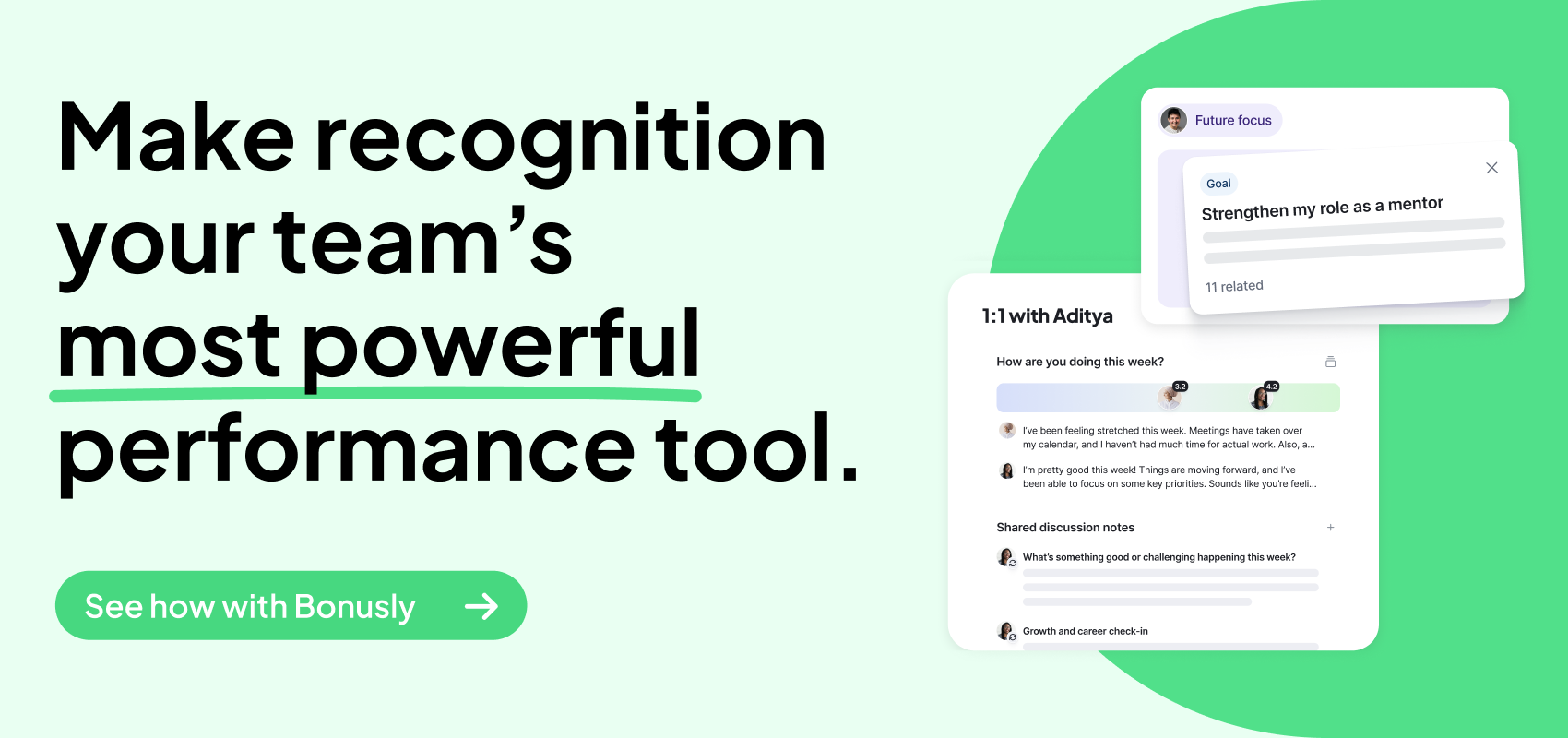To the Manager Doing the Glue Work: You Don't Have to Do It All Alone

Last week, I stayed late at work to check in with a direct report who seemed off all week. Before that, I spent the better part of my day on tasks that, while important, aren't technically in my job description, like suggesting a new approach to our weekly team meeting.
By 5, I couldn't point to a single thing I'd crossed off my to-do list. But, my team had a productive day. And that's the job.
If this sounds familiar, then you're doing glue work. Let me explain how glue work powers team performance, why it’s core to effective management, and how—despite being invisible—it can be scaled with the right tools and support.

The reality of glue work
As managers, we’re the ones our teams turn to when things get tense. We bridge strategy and execution, and translate vague leadership visions into action plans. Simply put, we make the workplace work. Consistently, but usually behind the scenes.
We’re the glue.
This invisible infrastructure includes:
- Shaping team culture: Noticing when morale dips, addressing issues early, and fostering a sense of belonging and mattering.
- Keeping engagement high. Motivating, inspiring, and connecting the dots back to “why the work matters,” so teammates have a continuous sense of purpose and impact.
- Improving how work gets done: Designing clear processes, making it easier for people to collaborate, and reducing inefficiencies.
- Coaching for growth: Offering real-time feedback, helping team members develop, and surfacing potential others might miss.
- Connecting across teams: Clarifying confusing directives, aligning priorities, and keeping communication flowing.
- Sharing and sustaining knowledge: Onboarding new hires smoothly, documenting key practices, and ensuring institutional knowledge doesn't walk out the door with departing employees.
Effective managers do glue work well. It’s how we hit our goals and maximize value to the business.
But here’s the harder truth: we’re not evaluated, promoted, or resourced based on how well we do it.
That’s the core tension. The very levers managers use to drive those outcomes—coaching, clarifying, unblocking, aligning—are often invisible. They happen behind the scenes and outside most performance frameworks.
That’s the paradox at the heart of management. The work that makes the most significant impact is the hardest to measure and easiest to neglect.
What to do instead
Because it’s so hard to see and measure, many managers are saying: “Stop doing glue work. Just say no. Prioritize promotable tasks.” While I understand the logic, I'll offer a different approach: keep going.
Glue work is essential; it’s often the only way managers can keep teams engaged and performing. But we can no longer do it alone. We need help. And that’s where great tools come into play.
1. Let tools maximize our effectiveness
The right tools help us drive team engagement and performance, while also lightening the load. That’s a win-win. Here are a few use cases:
- Democratize where and how we build engagement: Instead of being the sole source of motivation, tools like Bonusly help create a culture where recognition flows through peers, amplifying positive momentum across the team.
- Reinforce what good looks like: When we can see patterns in what gets recognized, we can systematically reinforce winning behaviors and help the team understand what excellence looks like.
- Make the invisible visible: Recognition platforms help capture the connective moments that often go unnoticed. When a teammate thanks us for helping them navigate a client issue, that's coaching impact—and it becomes documented evidence of our leadership.
- Get context for better conversations: Instead of walking into 1:1s wondering how someone's doing, tools that integrate recognition, feedback, and team activity provide a real-time pulse. We can see who's getting recognized, who's struggling, and what's driving results. This transforms performance management from annual reviews into ongoing coaching opportunities.
- Create data from daily interactions: Every recognition or feedback exchange contains signals about team health, momentum, and wins. The right platform captures these signals and gives real-time insights without requiring us to be the emotional barometer for everything.
Essentially, tools turn the moments that matter—recognition, feedback, connection—into insights that help us lead more effectively and build better processes over time.
2. Make glue work even stickier
Glue work will always be part of the job. And, it doesn’t have to be heavy or all-consuming. With the right tools and a few clever tweaks, we can turn glue work into a lighter and more effective way to lead.
Here are a few simple ways to make glue work work for us, not just because of us:
- Create feedback loops that drive engagement: If we notice 1:1s feeling flat or surface-level, try a standing question to guide reflection, like: “What’s felt energizing and what’s felt draining this week?” We can also use a lightweight pulse tool to track how our team is feeling over time and spot trends we might miss in conversation.
- Build processes that move work forward: Instead of being a bottleneck for every decision, create frameworks that empower autonomy. For example, I have a “48-hour rule” where if I don’t respond to a question within two business days, my reports are encouraged to decide and move forward, with no repercussions. This kind of simple guardrail boosts ownership without needing constant oversight.
- Turn coaching into shared learning: When we find ourselves giving the same feedback more than twice, it’s a cue to scale it. Maybe that means a quick Slack post sharing what “great” looks like, or maybe it’s a team retro on a recent challenge. (Note: this doesn’t have to be formal training; it just needs to be repeatable.)
- Make problem-solving preventative: Solutions like Bonusly can help us spot patterns—like who’s collaborating across functions or where recognition is falling off—so we can design simple, preventative fixes. Things like: a cross-team standup or a “who’s doing what” check-in.
The goal of all this is to make what we’re already doing more sustainable. When we build small, supported systems—backed by tools and embraced by our teams—we free ourselves from carrying the full weight alone.
The call to action
It takes intention (and yes, some effort) to shift from doing everything ourselves to building small systems and using tools that support us. But the alternative? It's trying to lead well while quietly drowning under the weight of invisible work. That leaves us exhausted, and it limits our team's potential.
We don't have to choose between being the glue and being effective. We do our most important work in the spaces between what gets measured, and when we do it well, we quietly create the conditions for exceptional performance. With the right tools and small systems that support the work we’re already doing, our strengths and our team’s success can both win.
The organizations we work for need to understand this, too. If they want high-performing, human-centered teams, they need to resource the work that holds them together, rather than expecting us to figure it out alone. The companies that support effective management on purpose build healthier and more resilient teams. Great teams are built by someone holding it all together. Imagine the results when they don't have to go it alone.
Manager effectiveness starts with recognition and ends with high-performing teams. See how with Bonusly.








